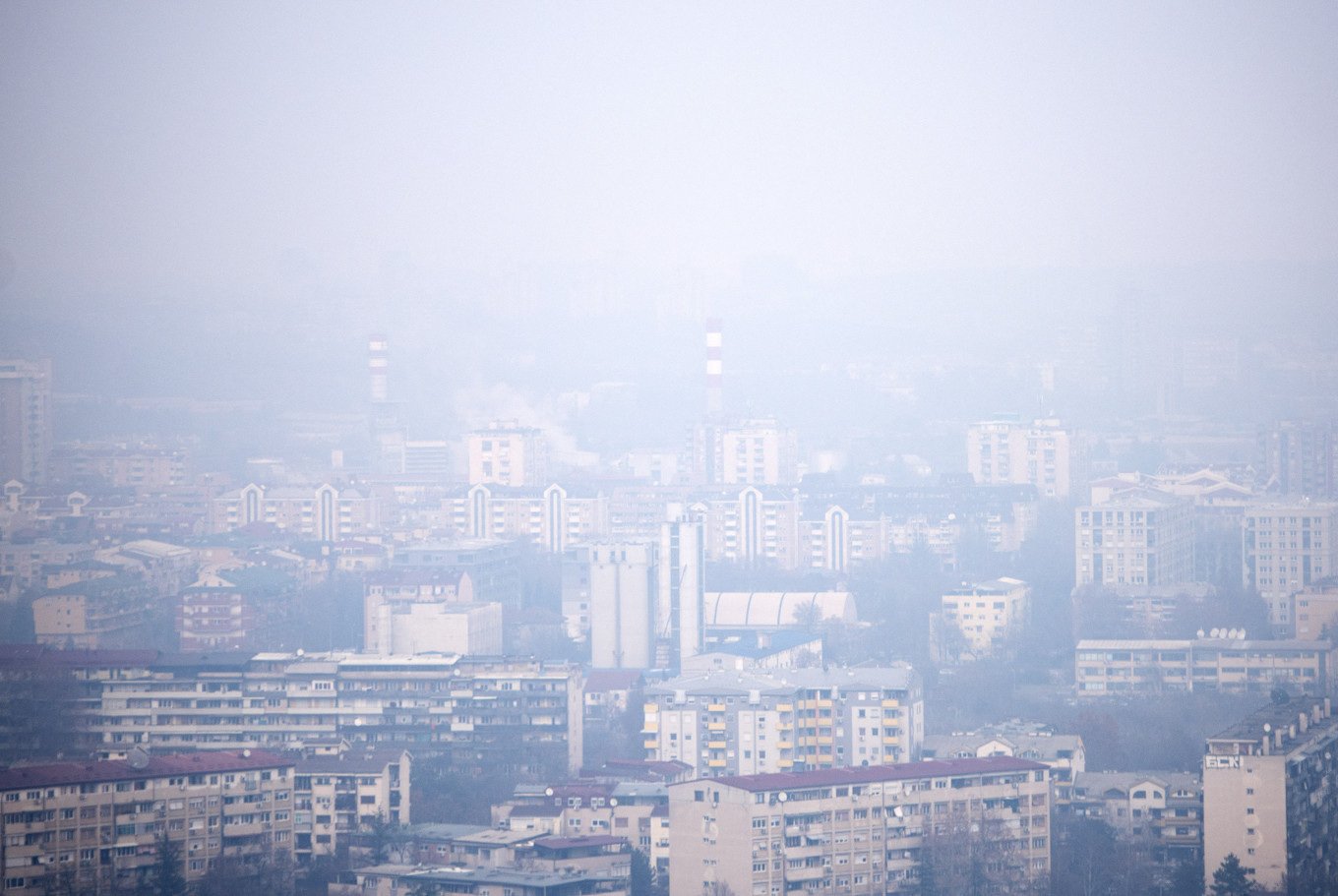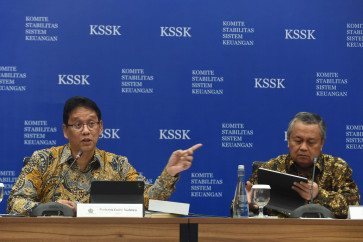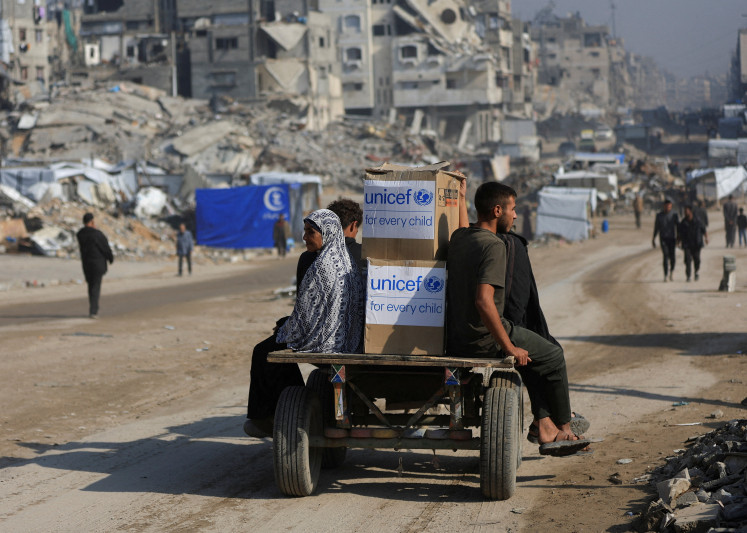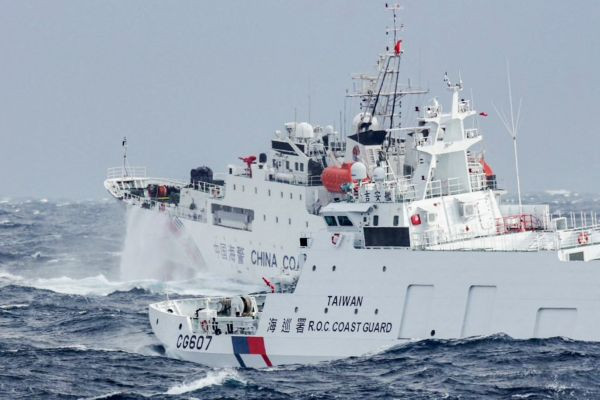Popular Reads
Top Results
Can't find what you're looking for?
View all search resultsPopular Reads
Top Results
Can't find what you're looking for?
View all search resultsWith cash infusion, developing nations boost sun-dimming research
Change text size
Gift Premium Articles
to Anyone
S
tepping into a "minefield" about how to slow global warming, scientists in developing nations have won new funds to study whether dimming sunshine by mimicking volcanic eruptions can be a sufficiently safe way to temporarily cool a hotter planet.
Research into "solar geoengineering", perhaps using planes or balloons to spray sun-reflecting sulfur into the stratosphere, has made scant progress despite alarm over rising temperatures and a sluggish global shift from fossil fuels to renewable energy.
Trying to build momentum, the Degrees Initiative, a United Kingdom-based nongovernment group, announced on Wednesday US$900,000 in new solar geoengineering funding for researchers in 15 countries including Nigeria, Chile and India.
The money will pay for things like computer modeling to study how solar geoengineering, also called solar radiation modification (SRM), might affect everything from monsoons and storms to heatwaves and biodiversity.
The new grants follow an initial 2018 round, also worth $900,000, backing projects in 10 developing nations to understand risks such as worsening droughts in South Africa or possible impacts on rice and maize production in the Philippines.
So far, research into a possible planetary sunshade has been dominated by universities in rich nations, such as Harvard and Oxford.
“The whole point is a redistribution of power on SRM. It is empowering the countries who would be most affected by decisions to use it or reject it,” said Andy Parker, CEO and founder of the Degrees Initiative.
The new funding is a joint project between the Degrees Initiative, funded by Open Philanthropy, backed in part by Facebook cofounder Dustin Moskovitz, and the World Academy of Sciences.
“Given the high stakes, there is a shockingly low level of research around the world,” Parker said, estimating SRM research attracted somewhere in the “low tens of millions of dollars” globally a year.
Alibi for inaction?
Critics say pursuing SRM as a potential way to deal with climate change could give fossil fuel companies an alibi for inaction, and could disrupt weather patterns, perhaps exacerbating poverty in the most vulnerable nations.
“It is too controversial,” said Chukwumerije Okereke, director of the Center for Climate Change and Development at Alex Ekwueme Federal University in Nigeria.
“I can list 100 things the world can do [to slow climate change] and geoengineering will not figure among them.”
Okereke, who is also a visiting professor at the London School of Economics, noted a key United Nations panel of climate scientists did not even mention SRM in a 48-page summary last year to guide policymakers on how to address global warming.
Backers of SRM say the technique draws inspiration from volcanoes. The eruption of Mount Pinatubo in the Philippines in 1991, for instance, cut global temperatures for more than a year as an ashen veil swirled high above the planet.
With the last eight years the warmest on record and global temperatures already having risen about 1.2 degrees Celsius above preindustrial times, approaching the 1.5 degrees Celsius lower limit set in the 2015 Paris Agreement, finding ways to limit heating is crucial, scientists say.
Frank Biermann, a professor of global sustainability governance at Utrecht University, decried SRM as a distraction from the need for the rich to cut emissions.
He said that the average American emits 14.7 tonnes of climate-changing carbon dioxide a year, compared with just 1.8 tonnes per person in India.
If everyone in the world had per-capita emissions equal to those of India, or Africa or most of Latin America, climate change would not be a significant problem, he said.
Swifter emissions cuts by the rich, rather than techno-fixes aimed to buy time for cuts, should be the real focus of efforts to address climate risks, Biermann said.
"The question is 'Who are we buying time for?'" he asked. "Is it the time for the global population, the poor and the vulnerable? Or is it time bought for the oil industry, the gas industry, the coal industry?"
Mexico band experiments
Biermann said 390 scientists had signed a letter urging a ban on the use of SRM, and he welcomed a decision by Mexico last month to ban experiments after a United States start-up, Make Sunsets, launched sulfur-carrying balloons in Mexico without seeking local permits.
Make Sunsets has since shelved plans for new launches.
But researchers involved in the new SRM funding round said gaining more knowledge about options to deal with climate change was vital.
Andreas Meyer, a researcher at the University of Cape Town who will study how SRM might affect biodiversity, said deep cuts in emissions were the best solution for climate change.
But “further research is needed [for SRM] to fully understand its potential benefits and drawbacks,” he added.
His team will study how a sun-dimming haze might affect the survival and reproduction of animals, using a database of 30,000 mammals, birds, amphibians, reptiles, fish and marine invertebrates.
The team will also take a look at how the use of SRM might affect mosquito-borne diseases.
Pornampai Narenpitak, of Thailand’s National Science and Technology Development Agency and the leader of one of the research teams, said she welcomed “opportunities for SRM scientists in the Global South to catch up with the research that's been done in the Global North.”
Her team will study how the use of SRM might affect river flows in the Chao Phraya River basin in Thailand, among other issues.
Pascal Lamy, the former head of the World Trade Organization who chairs a commission looking at what to do if temperatures overshoot the 1.5C limit, predicted hard choices ahead as the planet heats up, bringing harsher weather extremes.
“Even if there are obvious risks [in SRM], there are also enormous risks in global warming too,” he said. “It is risk against risk”.
Lamy’s Climate Overshoot Commission, whose members include former presidents of Mexico and Kiribati, will issue a report late this year.
When it comes to considering the use of SRM, “I have the impression of walking on a field of landmines,” he said.











